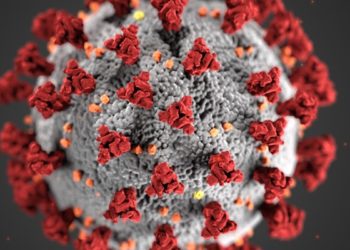Homebound population linked to increased health service use and mortality
1. In this cross-sectional study, beneficiaries of a large national Medicare Advantage plan who were homebound had increased rates of health service use and mortality.
2. Female sex, low-income status, dementia, and moderate-to-severe frailty were predictive of homebound status.
Evidence Rating Level: 2 (Good)
Study Rundown: An increasing number of older adults have functional impairments and chronic medical conditions which prevent them from leaving their homes. Homebound older adults have been shown to utilize primary care at lower rates relative to their morbidity burden but utilize hospital, emergency department, and skilled-nursing facility care at higher rates than their non-homebound counterparts. Medicare Advantage (MA), a type of health plan offered by Medicare-approved private companies, provides insurance coverage to more than half of Medicare beneficiaries and has increased its use of home-based care. However, the epidemiology of populations enrolled in MA remains poorly understood. Thus, this study aimed to investigate the characteristics, usage patterns, and mortality outcomes of homebound beneficiaries of Humana, a large national MA program. Overall, more than one-fifth of beneficiaries were found to be homebound to some extent, with female sex, low-income status, dementia, and moderate-to-severe frailty being significant predictors of homebound status. Homebound beneficiaries of Humana also had increased rates of health service use and mortality, with higher likelihoods of emergency department, hospital, and skilled nursing facility use. The study overlapped the tail end of the COVID-19 pandemic, which observed a significant increase in the prevalence of homebound status. Moreover, the study utilized data from a single MA plan, affecting the generalizability of its findings. Overall, this study highlights the size and composition of this at-risk population.
Click to read the study in AIM
Relevant Reading: Epidemiology of the homebound population in the United States
In-Depth [cross-sectional study]: This cross-sectional study was the largest survey of homebound status and epidemiology to date. Beneficiaries enrolled in plans offered by Humana who completed an in-home health and well-being assessment (IHWA) between January and December 2022 and were continuously enrolled in the plan from January 1 to December 31, 2021, were included in the study. Using self-reported responses from the IHWA, individuals were defined as homebound if they never or rarely left the home, semi-homebound if they left the home but were at risk for becoming homebound, or non-homebound. Out of 5,722,966 active beneficiaries in 2022, 2,435,519 were eligible, and 514,188 individuals completed an IHWA. Among the individuals who completed an IHWA, 113,052 were homebound to some degree (a homebound prevalence of 22.0%), of whom 69,740 (13.6%) of beneficiaries were semi-homebound and 43,312 (8.4%) of beneficiaries were completely homebound. Individuals of female sex (odds ratio [OR], 1.36; 95% confidence interval [CI], 1.35 to 1.37), low-income status or dual eligibility for Medicare and Medicaid (OR, 1.56; 95% CI, 1.55 to 1.57), dementia (OR, 2.36; 95% CI, 2.33 to 2.39), and moderate-to-severe frailty (OR, 4.32; 95% CI, 4.19 to 4.45) were associated with homebound status. Homebound status was also associated with increased odds of any emergency department visit (OR, 1.14; 95% CI, 1.14 to 1.15), inpatient hospital admission (OR, 1.44; 95% CI, 1.42 to 1.46), skilled-nursing facility admission (OR, 2.18; 95% CI, 2.13 to 2.23), and death (OR, 2.55; 95% CI, 2.52 to 2.58). In summary, this study added to the body of literature describing the risk factors and outcomes of the growing population of homebound adults.
Image: PD
©2024 2 Minute Medicine, Inc. All rights reserved. No works may be reproduced without expressed written consent from 2 Minute Medicine, Inc. Inquire about licensing here. No article should be construed as medical advice and is not intended as such by the authors or by 2 Minute Medicine, Inc.









